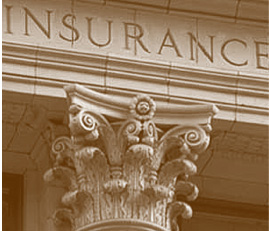The hurricane season is almost over, but one more storm could hit Florida. The concerns for insurers will not go away on November 30. Insurers are currently in negotiations with reinsurers, who are attempting to raise rates by 10% to 30%. Every January 1, nearly two-thirds of U.S. property-catastrophe coverage renews, including for many large, diverse U.S. and European insurers.
It is too early to tell whether the reinsurers will get what they want. Carriers may purchase less reinsurance to limit cost increases, taking on more risk themselves and potentially limiting premium increases passed on to customers. Insurers have already raised premiums on their business, homeowner, and auto policies to deal with rising costs, primarily due to inflation.
Reinsurers are reacting to five years of massive catastrophe losses, as well as growing concerns that climate change is exacerbating the risks of storms and wildfires, among other things. Hurricane Ian, which killed over 130 people, is expected to cost insurers between $40 billion and $70 billion, making it the nation’s second most expensive natural disaster for the insurance industry. In today’s dollars, Hurricane Katrina cost more than $90 billion.
Despite the high cost, large publicly traded property insurers emerged from Hurricane Ian in good financial shape, according to their third-quarter reports. Their earnings have been severely impacted, but Moody’s Investors Service notes that they have significant resources to draw on. Dozens of small to midsize Florida-focused insurers, mostly privately held, will soon file detailed quarterly reports with regulators. Meanwhile, subtropical storm Nicole is expected to hit the state’s east coast later this week, potentially adding to the number of disaster claims.
Many of the large national carriers, as well as all of the Florida-specific carriers, rely on reinsurers—a global community of giants such as Munich Re, Swiss Re, Lloyd’s of London, and Berkshire Hathaway Inc., as well as smaller players—to assume some of the risk of the policies they sell.
Hurricane Ian caused insurers’ losses to be limited by reinsurance. Allstate Corp. reported that its Ian-related estimated gross catastrophe losses totaled $671 million pretax, but reinsurance reduced what it will pay by $305 million, bringing the total to $366 million.
Allstate CEO Thomas Wilson stated that reinsurers are seeking price increases due to recent losses, concerns about climate change, and the recent strengthening of the dollar, which hurts some reinsurers because they sell coverage in US dollars but hold their capital in another currency.
“The combination of those three factors will result in a very tight reinsurance market,” Mr. Wilson predicted. “It appears to me that the price will rise next year.” According to him, Allstate will not be hit all at once because its reinsurance program staggers renewals over three years.
Insurers are also being harmed by rapidly rising interest rates. Higher interest rates devalue the bonds they own. If the companies face payouts, such as from a series of major hurricanes, they may be forced to sell some of their bonds at a loss. Inflationary pressures on carriers are also pushing up reinsurance prices.
With so many issues, “this is really the most challenging renewal year probably since Katrina,” according to David Flandro, head of analytics at London-based broker Howden Group. According to Howden data, year-over-year property-catastrophe reinsurance price increases worldwide were 9% during the January 2022 renewal period.
Reinsurers haven’t been shy about predicting price increases. In an earnings call on Oct. 28, Swiss Re’s Group Chief Financial Officer John Dacey stated that “prices will not show some sort of evolutionary adjustment, but rather a fairly radical adjustment up.”
“They’re definitely bracing for price increases,” said Chris Dittman, executive managing director and Florida-segment leader at Aon Reinsurance Solutions, of the firm’s insurance clients across the country.
According to ratings firm Demotech Inc., Florida-focused home insurers went through their renewal period this summer, with prices increasing by 25% to 30% in many cases.
One unknown is what will happen to the market for catastrophe bonds, which are a type of reinsurance alternative. When interest rates were low, pension funds, endowments, and other institutional investors purchased catastrophe bonds for a variety of reasons, including increased returns. With interest rates rising, investors may lose interest in these securities.
If a large number of investors abandon the cat-bond market, brokers and analysts predict that reinsurance pricing will rise.
Prior to Hurricane Ian, 2022 had been a relatively benign year for American insurers. Reinsurers, who face global risks, have had a more difficult year. According to Swiss Re, there were unusually fierce winter storms in Europe, unprecedented flooding in Australia and South Africa, and severe heat waves that sparked forest fires in southwest Europe.













